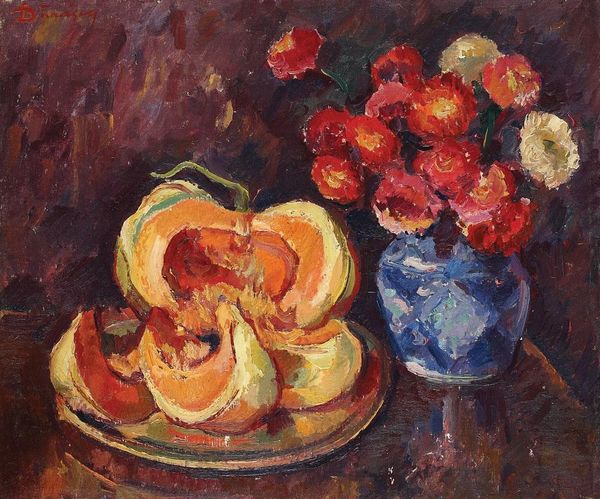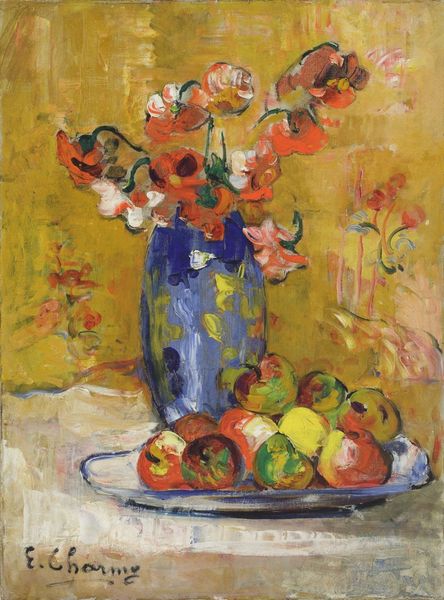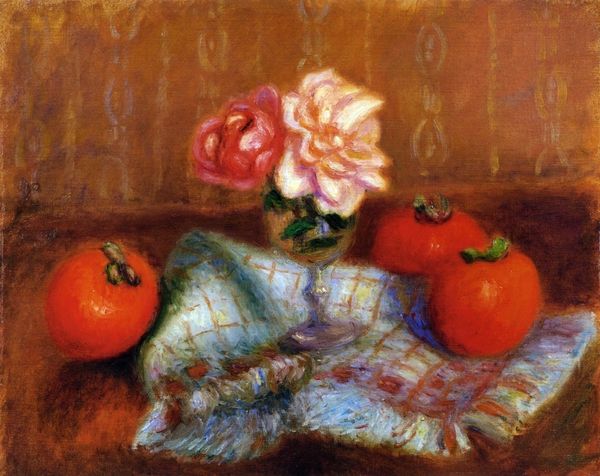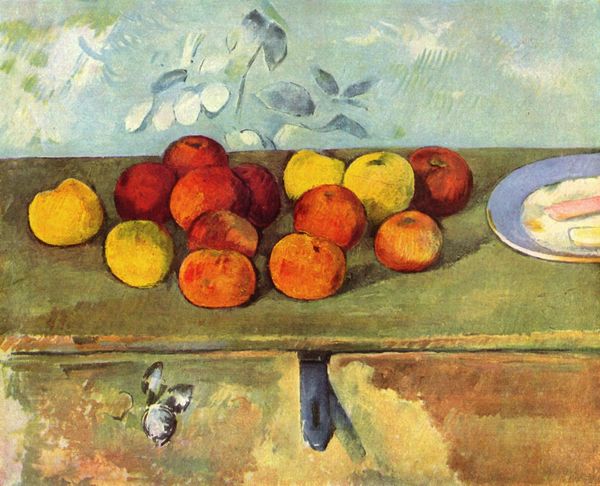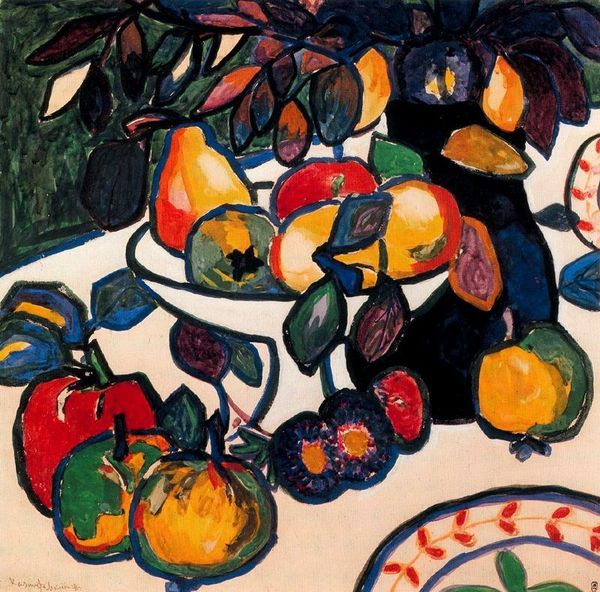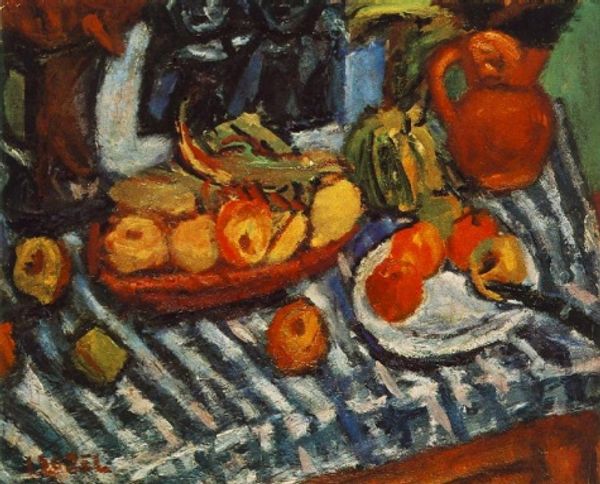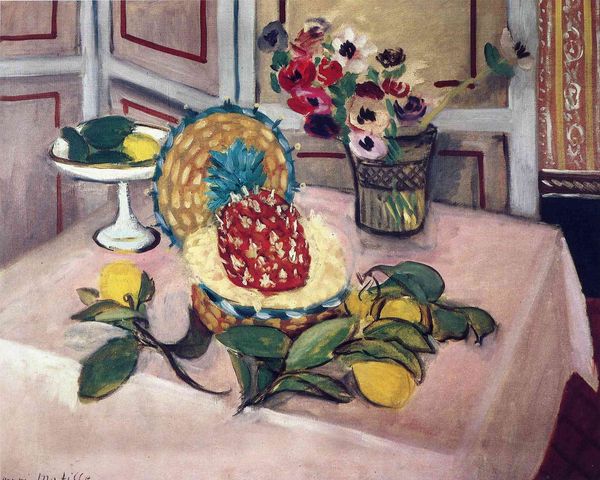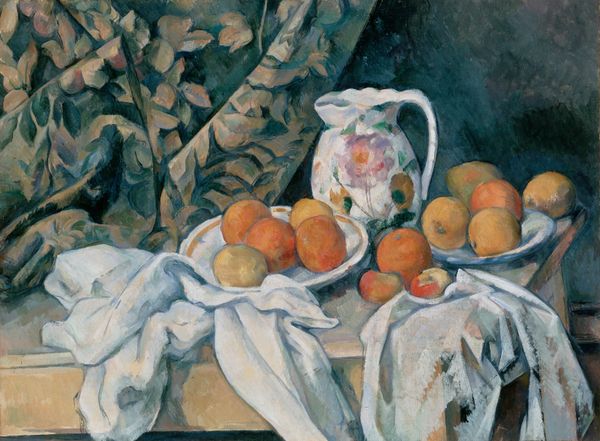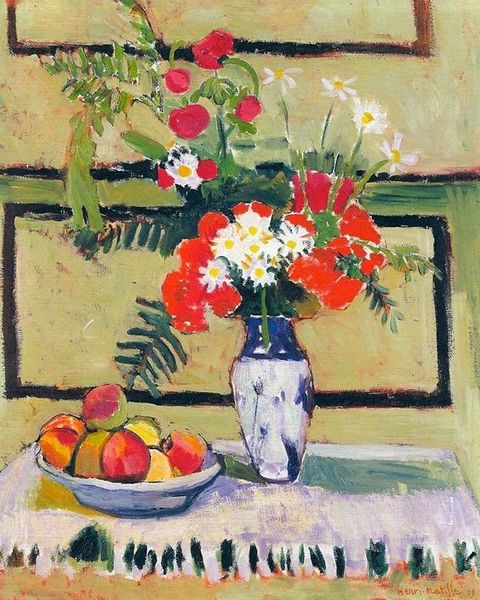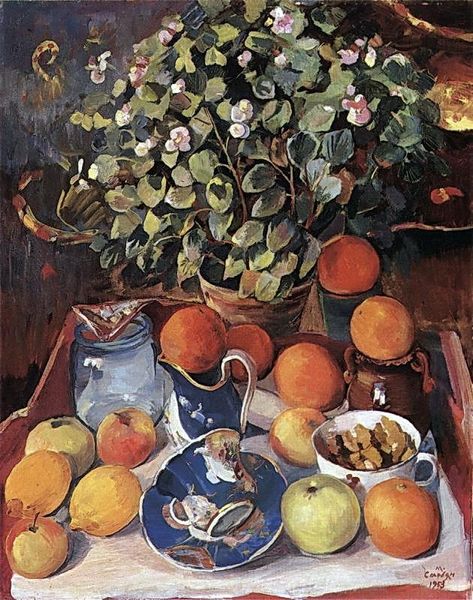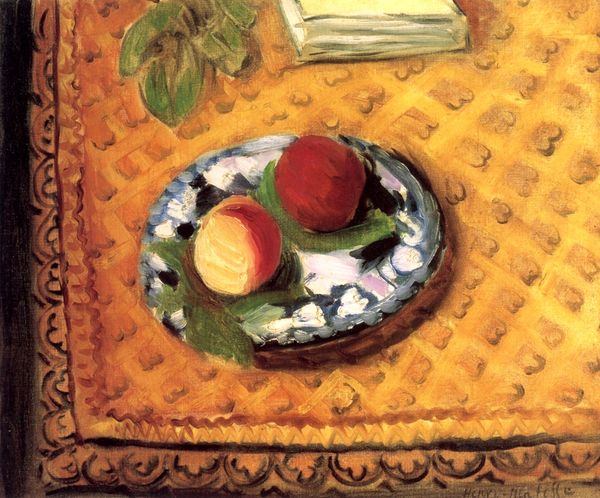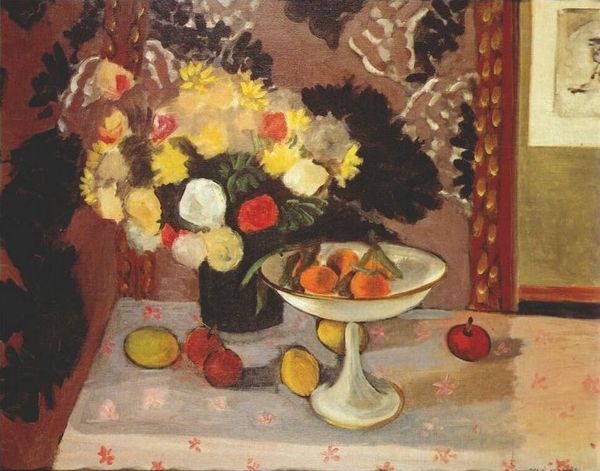
Copyright: Henri Matisse,Fair Use
Editor: Here we have Henri Matisse’s “Still Life with Pineapple” from 1924, rendered in oil paint. There's something about the juxtaposition of the pineapple against the floral backdrop that feels so vibrant, almost aggressively so. What do you see in this piece, beyond just a bowl of fruit? Curator: I see a negotiation of power and exoticism. The pineapple itself, a symbol of luxury and colonial trade routes, sits enthroned within this domestic space. Matisse, though not overtly political, was deeply influenced by the cultural climate of his time. How does the painting challenge or reinforce ideas about wealth, privilege, and the consumption of the 'other'? Editor: That’s a really interesting perspective. I hadn't considered the pineapple as a symbol of colonial power, more just a, well, decorative element. Curator: Think about it: where do pineapples come from? Who profits from their cultivation and distribution? These are not merely aesthetic choices, but embedded with layers of social and economic history. Matisse's fauvist approach flattens the picture plane, disrupting traditional hierarchies. Is he flattening the power structures, or simply aestheticizing them? Editor: So you're saying the vibrant colours and bold brushstrokes might be downplaying these deeper social meanings? Curator: Precisely! Consider, too, the domestic setting. Does it soften the sharp edges of colonial exploitation, or highlight the ways these systems permeate our everyday lives? It's this tension, this uneasy balance, that makes the painting so compelling, even now. Editor: Wow, that's really made me rethink my initial interpretation. I see how just beneath the surface, it asks a lot of very pertinent questions. Curator: It’s these kinds of questions that can breathe life into our art history studies.
Comments
No comments
Be the first to comment and join the conversation on the ultimate creative platform.
